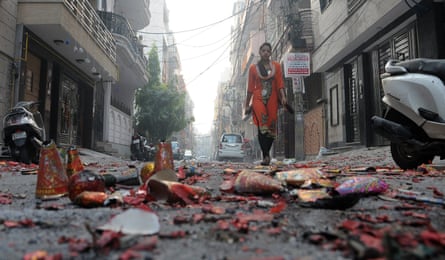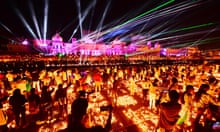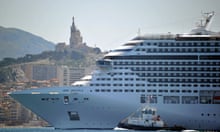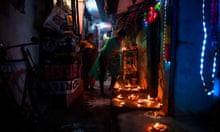Air pollution in Delhi has hit 18 times the healthy limit and left the city under a thick, toxic haze after Diwali was celebrated with a night of fireworks – despite a court-ordered ban on their sales.
Residents of the Indian capital, which already ranks among the world’s most polluted cities, complained of watering eyes and aggravated coughs as levels of PM2.5, ultra-fine particles of less than 2.5 microns, rose alarmingly on Friday.
Air quality usually worsens in Delhi before Diwali, the Hindu festival of lights, and the supreme court temporarily banned the sale of firecrackers, with the aim of reducing the health risks.
However many still lit fireworks across the city late into the night, either using old stock or buying them from neighbouring states.
Some environmental activists said the court order was poorly enforced and firecrackers were still available.
“Breathe nitrate and ammonia, home grown, hand made!” said environmentalist Vimlendu Jha in a tweet calling for city authorities to declare a public emergency.

An index of air quality had crossed the hazardous limit of 300 on Friday, the most severe level on a US embassy scale of measurement, which rates a reading of 50 as good and anything above that as a cause for concern.
Some parts of Delhi, such as Mandir Marg, showed an air quality reading of 941, close to the maximum of 999, beyond which no readings are available. The index measures concentrations of PM2.5, PM10, ozone, nitrogen dioxide and sulphur dioxide, among other indicators.
When air quality reaches a hazardous level, people may experience ill effects and are advised to stay indoors.
Apart from the firecracker ban, the supreme court also ordered diesel generators and a power plant to be shut down to try to reduce pollution. The Environment Pollution (Prevention and Control) Authority also ordered some brick kilns to close and for the burning of rubbish to be stopped.
Dipankar Saha, a scientist at the Central Pollution Control Board, said the still weather had also played a part in the toxic haze hanging over the city.
However, pollution levels were better than during last year’s Diwali, he said, when the firework residue combined with crop burning in nearby states.
“It was going to be hard to beat last year’s level in any case,” he said.











